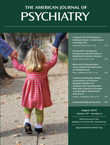Telescoping and Gender Differences in Alcohol Dependence: New Evidence From Two National Surveys
Abstract
Objective
The course of alcohol disorders in women is often described as "telescoped" compared to that in men, with a later age at initiation of alcohol use but shorter times from use to dependence and treatment. This study examined evidence for such a telescoping effect in the general population and tested birth cohort effects for gender differences.
Method
Data from two U.S. national surveys conducted 10 years apart (1991–1992 and 2001–2002) using the same diagnostic instrument (the Alcohol Use Disorder and Associated Disabilities Interview Schedule–IV) were used to analyze five birth cohorts. Age at initiation of alcohol use, time from first use to dependence, and time from dependence to first treatment were analyzed. Interaction terms (cohort by gender; cohort by gender by time) were tested in Cox proportional hazards models.
Results
Little evidence was found for a telescoping effect in women. For alcohol use and dependence, cohort and gender interacted, which suggests that gender differences are diminished in more recent cohorts. A three-way interaction of cohort, gender, and time was significant for time from first use to dependence, suggesting that men have a shorter time to dependence, especially in younger cohorts.
Conclusions
A telescoping effect is not evident in the general population. Gender differences in the overall hazard of alcohol use and dependence are decreasing in more recent cohorts, while gender differences in time from first use to dependence are increasing. These findings challenge the commonly held notion of a gender-specific course of alcohol disorders and suggest the need for a greater clinical focus on problem drinking in women and further research on accelerated time to dependence in men.



